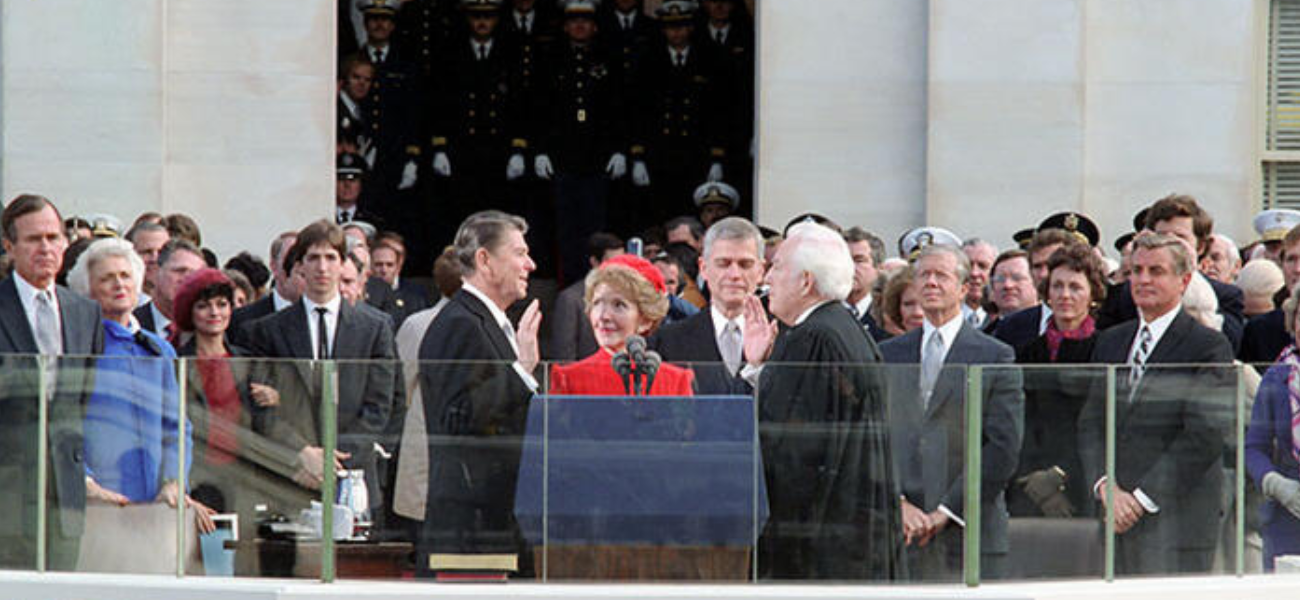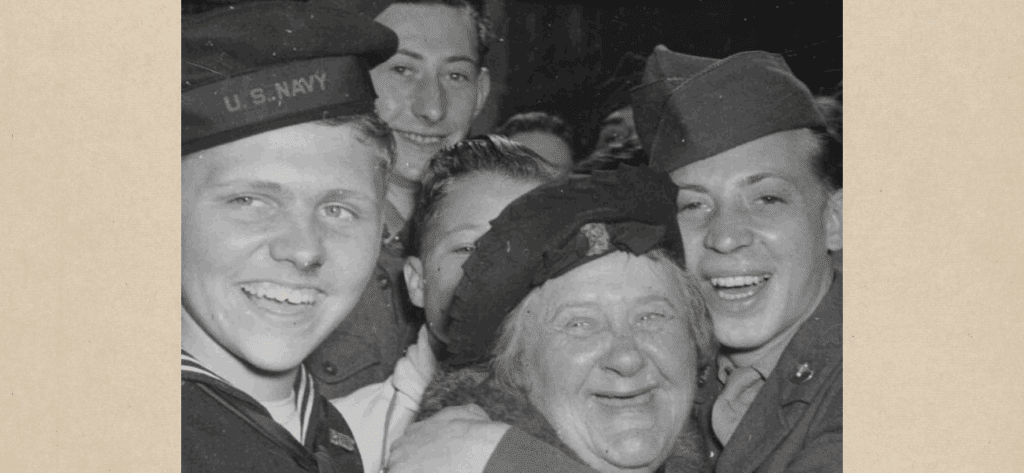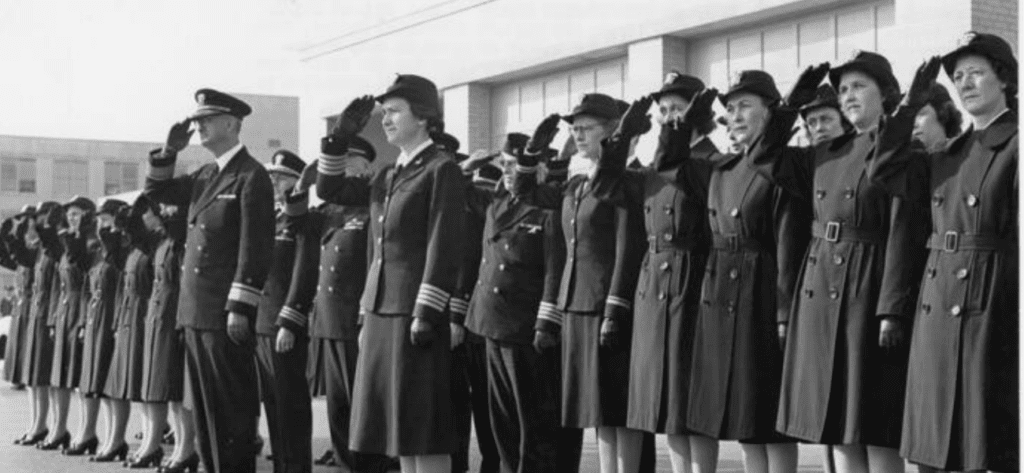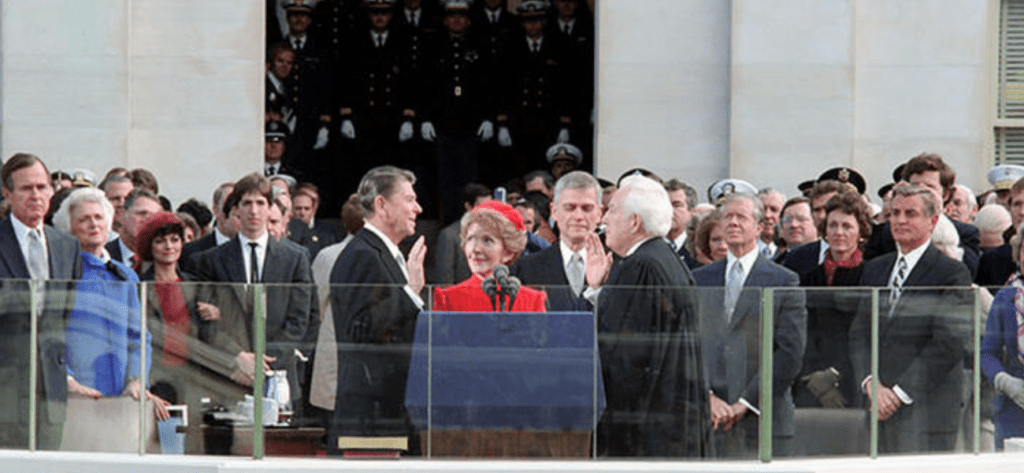On Display 1/10/2025 – 2/3/2025
From George Washington’s second term through Franklin D. Roosevelt’s first, inauguration day was generally held on March 4. Without cars or computers, the four months between the election and inauguration served a purpose in the late 18th and 19th centuries. It allowed the President-elect time to settle their affairs and journey to the nation’s capital.
However, the long gap in political leadership was also a liability for the nation in times of crisis like the Civil War and the Great Depression. As advances in transportation and communication in the 20th century sped up the pace of government and reduced travel times nationwide, Congress proposed a constitutional amendment to shorten the period between the election and inauguration.
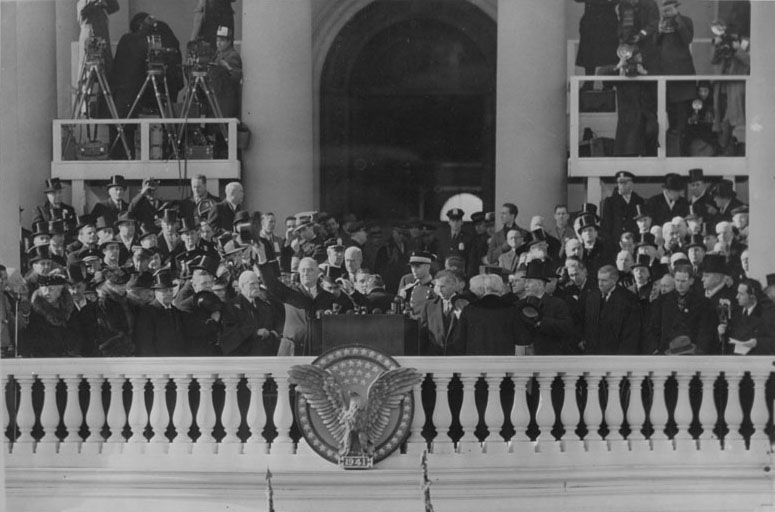
(63-122)
View in the National Archives Catalog
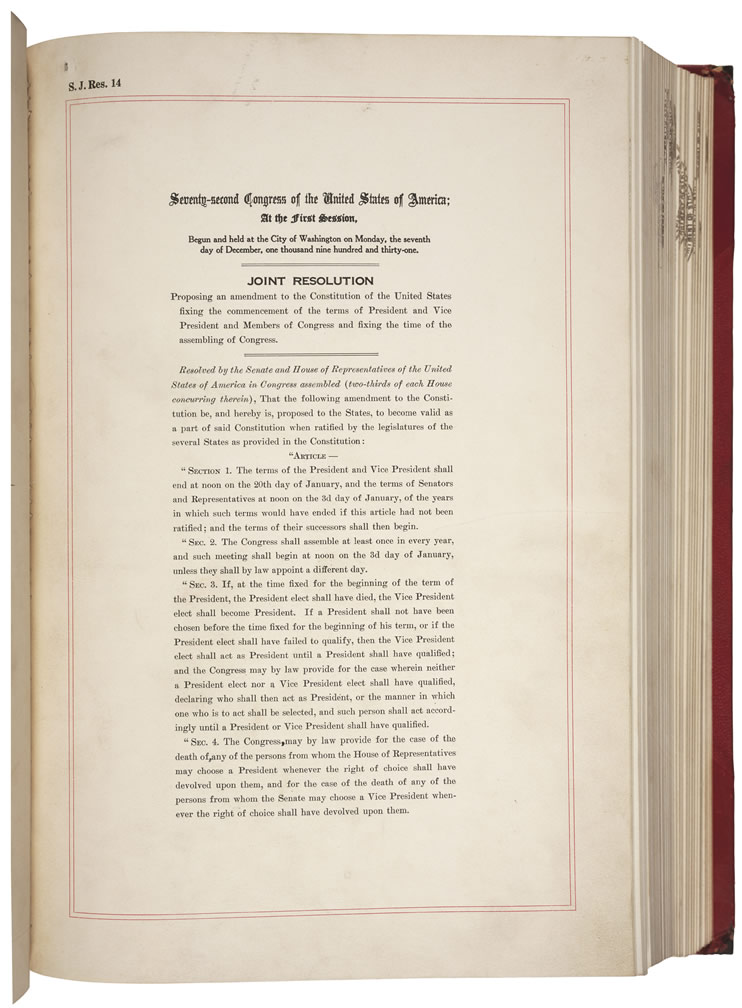
The 20th Amendment to the Constitution was proposed by Congress in 1932 and ratified by the states on January 23, 1933. Since then, the President’s and Vice President’s terms begin midday on January 20. Congress begins on January 3. The amendment also defines a backup procedure in the event that a President-elect dies or has not been chosen by inauguration day–a statute that Congress has never needed to enact.
Joint Resolution Proposing the 20th Amendment to the United States Constitution, March 4, 1932. General Records of the U.S. Government
Additional Online Resources:
Guide to Federal Records: Records of Presidential Inaugural Committees
National Archives News: Presidential Elections and Inaugurations
Center for Legislative Archives: George Washington’s First Inaugural Address, April 30, 1789
William J. Clinton Presidential Library: The Presidential Inauguration in History
